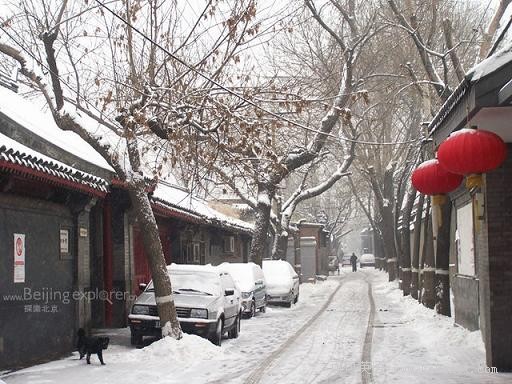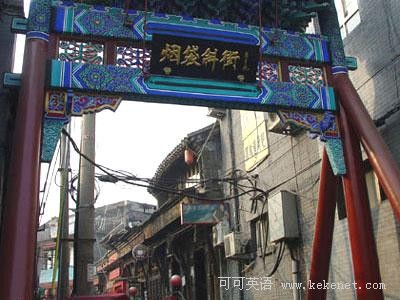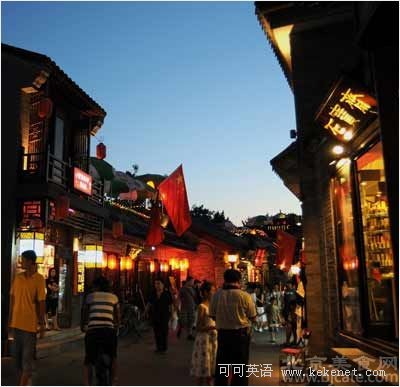(单词翻译:单击)
People say that the real culture of Beijing is "the culture of hutong" and "the culture of courtyard". How true that is. Often, it is Beijing's winding hutongs that attract tourists from home and abroad rather than the high-rise buildings and large mansions.
Hutong is a typical lane or small street in Beijing that originated during the Yuan Dynasty (1271-1368). "Hutong" is a Mongolian word, meaning "water well". During that time, water well is the settlement around which people lived. There are tens of thousands of hutongs surrounding the Forbidden City. In the past, Beijing was composed of countless courtyards. Hutongs were formed when people left a passageway between two courtyards to make entering them more convenient.
As the symbol of Beijing City, a hutong has its own layout and structure, which makes it a wonder in the world. When taking a bird's eye view of Beijing, you will find the combination of hutongs and courtyards just like an orderly chessboard with delicate gardens, fine rockeries, and ancient ruins. Hutongs have witnessed the development of Beijing. Where there is a hutong, there is a story.
And today's destination is 烟袋斜街,and its English name is Skewed Tobacco Pouch Street.

The skewed tobacco pouch street is one of the most famous hutongs in Beijing. It measures 254 yards long connecting Di'anmen Street at the east end and the junction of Xiaoshibei Hutong and Ya'er Hutong at the west end. Like a tobacco pouch, the street goes from north-east to south-west, which gives its name - the Skewed Tobacco Pouch Street.

Originally in Qing Dynasty (1644 - 1911), this street was called the Skewed Drum Tower Street. At that time, local residents were addicted smoking opium. The increasing demand of pipes encouraged the opening of many pipe shops on the street. The shops had similar symbols - a wooden smoke pipe with a black pipe stem and a golden pipe bowl. Customers are often impressed by the vivid symbols standing in front of these pipe shops. The street became famous for its pipe business, and people began to know it as "the Skewed Tobacco Pouch Street", which was passed down to today.


